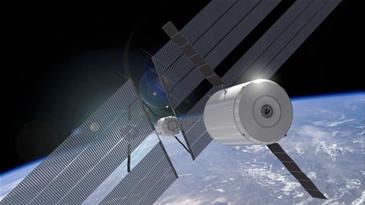At the American Institute for Aeronautics and Astronautics’ 2010 Space conference currently underway in Anaheim, California, NASA announced the latest revision of its programs to develop new technologies that will transform human spaceflight. NASA first began developing these plans in February following the Obama administration’s unveiling of its new space policy, and revealed them to the space community in May. Already however, significant changes have been made, in small part due to feedback from the space community, but mostly due to Congressional opposition to the White House’s policy. The House and Senate are fashioning a compromise, but NASA’s representatives cautioned that the impasse over the 2011 Financial Year budget is not likely to be resolved until several months into FY2011, and so even more changes are likely in the near future.

by an array of solar panels that can deliver 30 kilowatts.
Courtesy NASA.
However, at least in broad strokes, the agency’s commitment to developing and demonstrating certain technologies it believes are critical to its future are clear, with four test missions slated for launch between 2014 and 2018 by NASA’s new Flagship Technology Demonstration program.
The first mission is a Solar Electric Propulsion test flight, scheduled for 2014–a large solar array fitted to a small unmanned spacecraft will generate 30 kilowatts of power that will be used to drive an electric rocket. The mission will last two years, first visiting a dead satellite in geosynchrous orbit to test new proximity sensors for an automated rendevous and docking system NASA hopes to build, and then the spacecraft will go on to visit a near Earth asteroid, studying it with a small set of science instruments. NASA hopes such a propulsion system will let them build efficient space tugs, or power space debris removal vehicles.
Don’t settle for half the story.
Get paywall-free access to technology news for the here and now.